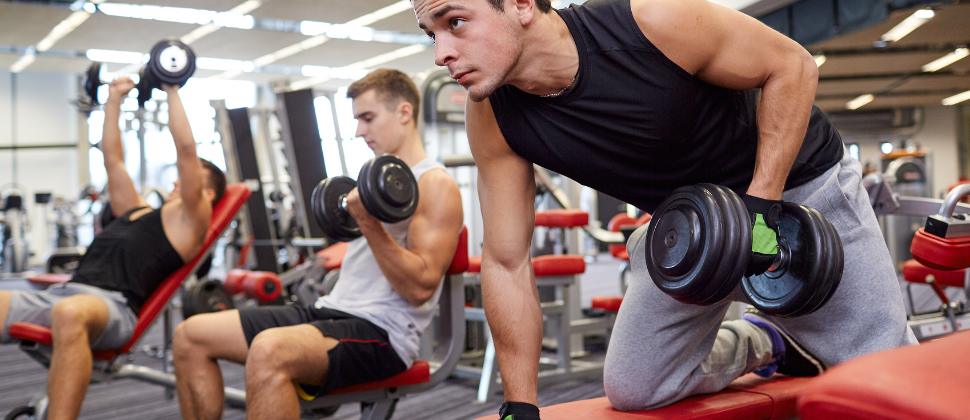Many people find working out at home to be a convenient way to stay fit, especially if their schedules are super busy and they can’t make it to a local gym. Being able to exercise in a comfy environment lets you try different exercises without feeling awkward in a crowded gym. But because you’re on your own, it’s crucial to be extra careful to avoid injuries from doing too much, using the wrong form, or accidents. That’s why following simple safety tips is a big deal for staying safe and getting the most out of your workouts.
It doesn’t matter if you’re just starting or you’re a fitness pro; making sure you’re safe is super important. With the rise of smart gyms for home workouts, things have changed in how we work out, making safety even more crucial. This guide will talk about some easy and essential safety tips for home workouts, helping you stay safe and get the most out of your exercises.
1. Schedule an Annual Health Check-Up

Just like your car needs an annual check-up, your body does too. Even if you love staying active, health issues like heart disease can catch you off guard. This is important whether you’re working out at a gym or in the comfort of your home. Many gyms ask for a health check to make sure your workout won’t worsen any existing issues.
However, when you’re working out at home, it’s easy to forget this crucial safety step. So, mark it on your calendar and get an annual health check-up before starting any exercise. Have a chat with your doctor about your workout plans, especially if you’ve got health concerns or take any medications. They might suggest some do’s and don’ts or give you a heads-up on certain exercises.
2. Maintain a Tidy Workout Space

Ensuring a clean workout area is essential for both safety and hygiene in a home gym setting. After each exercise routine, take a few moments to wipe down the equipment used. This practice not only contributes to a more organised environment but also increases the lifespan of your exercise equipment by preventing the accumulation of sweat and grime. Returning the dumbbells and other equipment to their right placements is also important. While this may appear to be a minor detail, it significantly minimises the danger of tripping or falling during the following sessions.
A clutter-free setting is essential for safe workout surroundings, lowering the risk of injury. It is also critical to address the element of hygiene. Wiping down equipment after each use is a preventative technique for removing germs and bacteria that flourish in warm and humid home gym conditions. This is especially important if numerous family members share the workout space. This careful approach is a modest but significant step in providing a professional, safe, and hygienic home workout environment for everyone.
3. Stay Mindful of Surroundings

When you’re really into your workout, it’s easy to focus only on the exercises. But being too focused might make you miss what’s happening around you, which could lead to problems. Just think about someone accidentally walking into your workout space and bumping into your dumbbell or getting surprised by a hanging knee-up. Before you start exercising, make sure the area is clear of stuff, pets, and little kids. Even though your kids and pets can be great cheerleaders, they might also distract you and increase the chance of accidents. If there are kids around, explain to them about the heavy equipment and how it can be risky.
Many people discover that enforcing a closed-door policy in their home gym provides them with more privacy and safety during their workouts. By closing the door, you lessen the likelihood of being distracted by children, pets, or others, providing an environment in which you can concentrate better and lowering the danger of accidents. This cautious approach not only improves the safety of your workout but also reduces the possibility of unexpected interruptions or accidents during your home exercise sessions.
4. Prioritise Warm-Up and Cool-Down

Prioritising a proper warm-up and cool-down is key to ensuring a safe and effective workout. The warm-up is not about stretching for hours, but it’s crucial to help your body adjust to the upcoming physical activity. A good warm-up gets the blood flowing and prepares your muscles for more exertion. Begin with light aerobic activities like jogging or jumping jacks before moving on to stretching. If you’re using cardio machines, start slowly and gradually increase the intensity. Even for high-intensity workouts like HIIT (high-intensity interval training), begin with a light jog to enhance blood flow to your muscles, priming them for better performance.
Regardless of your workout routine, incorporating active stretching and mobility exercises before starting is a smart move. These activities increase flexibility, improve range of motion, and reduce the risk of injury by preparing your muscles, tendons, and joints for the impending physical stress. Cooling down is equally important after your gym session. It allows your body to transition out of the workout more comfortably and gradually, preventing sudden stress on your cardiovascular system. Engage in a thorough stretching session during your cool-down, targeting the muscles you’ve just worked. This not only aids in flexibility but also supports muscle recovery.
5. Gradual Exercise Progression
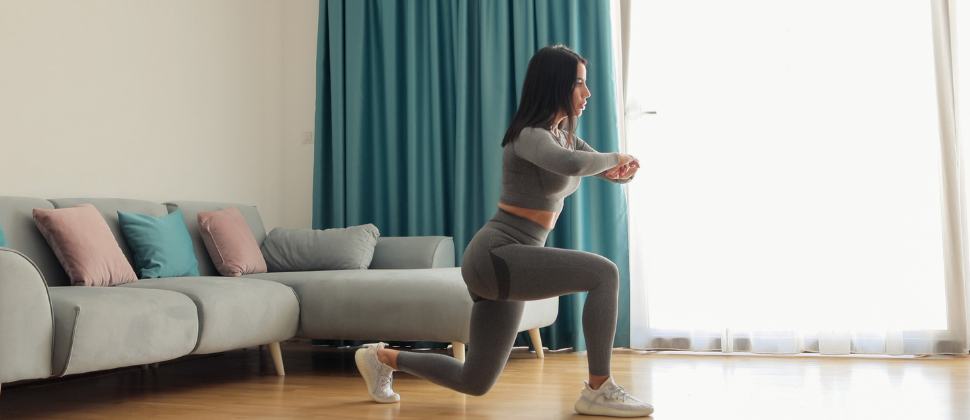
Getting fit or getting a great body doesn’t happen in a day. Trying to do too much too quickly can lead to injuries. That’s why it’s important to take it slowly and progress gradually. Your body responds well when you make changes slowly and steadily. Start your exercise routine with small increases in time, intensity, or reps. For example, if you’re lifting weights, begin with lighter ones. Slowly add more reps and sets before thinking about using heavier weights. This way, you reduce the chances of pushing yourself too hard and getting hurt.
Check your exercise plan every 4-6 weeks to see how you’re doing and if you need to make changes. This regular check helps you celebrate your achievements, figure out where you can do better, and adjust your workout accordingly. Going step by step in your exercise routine sets the stage for lasting fitness progress and helps prevent injuries. Remember, it’s the small, consistent efforts that add up to big success in the long run.
6. Partner Up for Safety
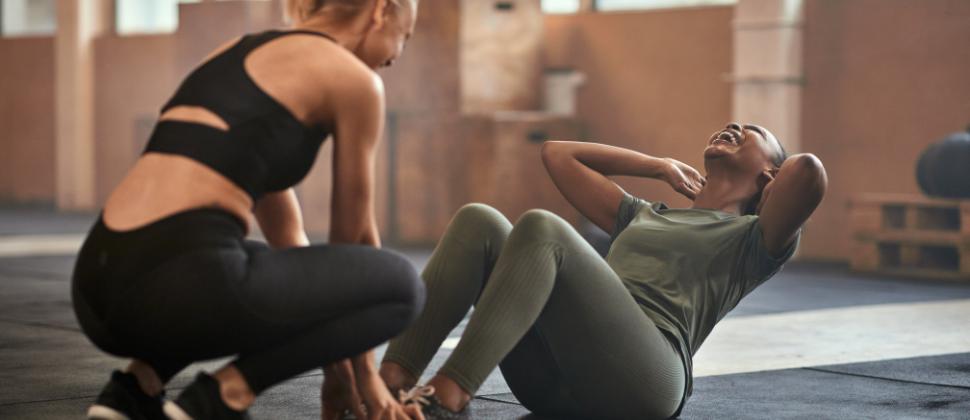
Having a workout partner is a wise decision, whether you’re in the gym or working out at home. It’s like having someone keep an eye on you to make sure you’re performing exercises correctly and not injuring yourself. It does not have to be your official workout buddy; it might be your roommate, spouse, or even an older child. But it’s also fine if you can’t find someone. The essential point is that you should have at least one extra person nearby when working out, even if they are not in the same room. This way, if something goes wrong or you require assistance, there will be someone nearby to assist you.
Working out with a partner also helps you both remain on track with things like drinking adequate water, taking deep breaths, and performing exercises correctly. If you’re lifting heavy weights at home, for example, your partner can step in if your muscles give out during a lift. Some gyms require a spotter when lifting high weights, and the same is true at home. You want someone to assist you so that you don’t drop the weight on yourself when trying to raise too much. Having a workout buddy is a great way to stay safe while also making exercise more enjoyable.
7. Wear Appropriate Gear
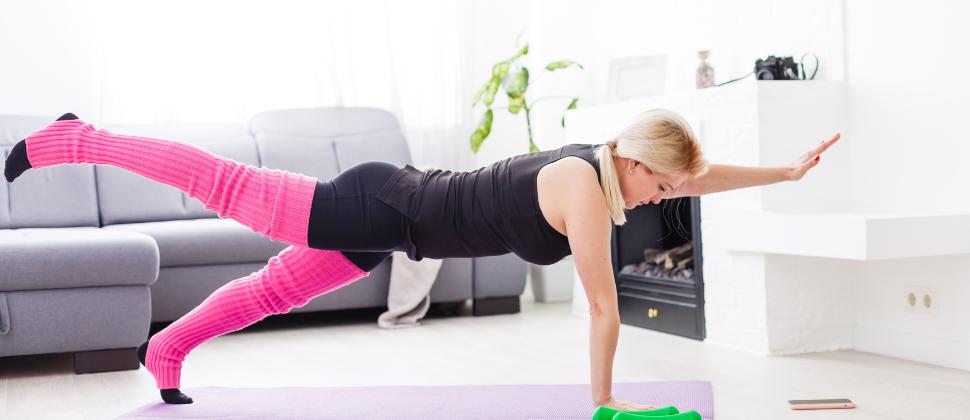
Just because you’re working out at home doesn’t mean you can’t skip on your workout gear. Making compromises with what you wear during your exercises can lead to discomfort and even potential risks. To avoid regrets, it’s crucial to prioritise appropriate clothing and gear for your home gym sessions. Start with comfortable and breathable clothing that allows you to move freely without any restrictions. The right pair of shoes is equally essential, providing the necessary support to prevent injuries during various exercises.
Avoid clothes that are too tight, as they can lead to leg cramps, chafing, or difficulty breathing. On the other hand, excessively baggy clothes might pose hindrances, getting in the way while running or lifting weights. Aim for outfits that are just the right fit to ensure a comfortable and effective workout. Additionally, it’s wise to skip wearing jewellery like rings, bracelets, and chains during your home workouts. While they might add a stylish touch, they could pose a risk if you happen to lose your grip on weights or equipment. Prioritising safety over style ensures a worry-free and injury-free workout experience in the comfort of your home.
8. Stay Hydrated

Prioritising sufficient hydration is an important component of your overall health, especially before and after workouts. To avoid dehydration, it is important to drink enough water before, during, and after exercise. Carrying a water bottle with you becomes a necessity, ensuring quick access to fluids whenever needed. Water is a powerful agent for removing toxins from the body, which contributes greatly to disease prevention. This detoxifying function emphasises the larger health benefits of being hydrated. Hydration functions as a preventative measure against future health problems, strengthening your body’s natural defence mechanisms.
Furthermore, water is essential for maintaining your metabolism. Staying hydrated allows your body to absorb nutrients more efficiently, which aids digestion and the production of energy. As a result, the benefits of hydration extend beyond your workout routine, influencing your entire metabolic health. Furthermore, it is critical to focus not just on water intake during exercise but also on maintaining a consistent hydration habit throughout the day.
9. Focus on Proper Form
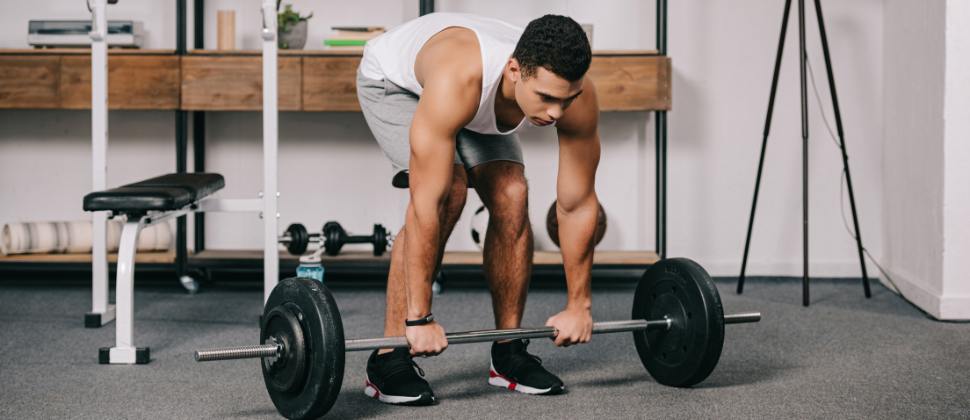
It is crucial to perform exercises correctly if you want to maximise the results of your workouts and maintain your safety. Whether you’re running on a treadmill or lifting weights on a machine, maintaining proper form and balance is crucial. This prevents injuries while also aiding in the activation of the appropriate muscles. Your muscles and tendons may suffer injury if you perform the exercises incorrectly, especially while doing strength training.
Your workouts will function better if you perform the exercises correctly. Asking an experienced trainer for assistance is a wise decision if you’re unsure about how to perform a certain exercise correctly. They can offer you individualised guidance to ensure that you’re performing exercises correctly, which increases the security and effectiveness of your workouts. Never forget that concentrating on the correct form is exactly like having a useful guide for a safer and more satisfying exercise experience.
10. Incorporate Rest Days Strategically
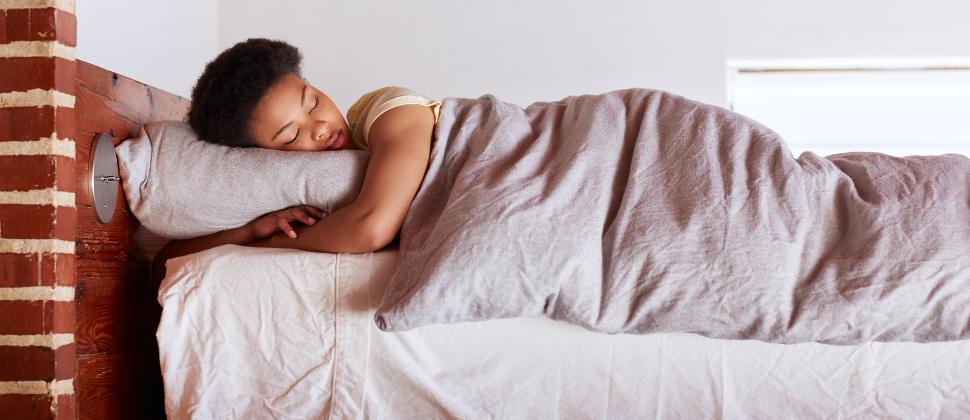
It’s crucial to pay attention to what your body is telling you, especially if you start feeling those muscles getting a bit sore after your workout. After putting in the effort to work out, you might notice some stiffness or aches. When that happens, it’s a good idea to give yourself a well-deserved rest day. Rest days will allow your body to recover and lower the risk of injuries. Plan for at least one or two rest days each week to keep your body in top shape. If your muscles feel a bit tight, consider treating yourself to a massage or using a foam roller to help ease the soreness. Don’t forget to get a proper good night’s sleep, as during this restful time your body gets the chance to recover and kickstart the muscle-building process.
In addition to scheduling regular rest days, explore relaxation techniques that will help you recover faster. Meditation, mild stretching, or even a leisurely walk can help supplement the restorative effects of dedicated rest days. Understanding that rest is not only a form of inactivity but also a necessary component of your exercise strategy allows you to approach your wellness journey comprehensively.
11. Expert Trainer & Online Guidance

While apps and written instructions can assist in grasping workout techniques, nothing quite compares to the guidance of an expert. Hiring a personal trainer for a few sessions can be a valuable investment to ensure you master proper form, enhancing your fitness journey significantly. Make use of the internet’s numerous resources to help you with your fitness goals. Seeking out videos showcasing the correct execution of specific exercises is a powerful way to refine your form. Watching these demonstrations makes it easier for you to perform exercises accurately and contributes to an overall improved workout experience.
The more informed you become about your workout methods, the safer and more effective your routines will be. Explore various online platforms, such as YouTube channels, where you can discover a wealth of information for fresh workout ideas and expand your knowledge. These platforms give you deep insights into fitness techniques, providing additional details for your workout routine. It’s like having an extra source of useful information to enhance your understanding and improve your overall fitness journey.
12. Use Equipment Safely
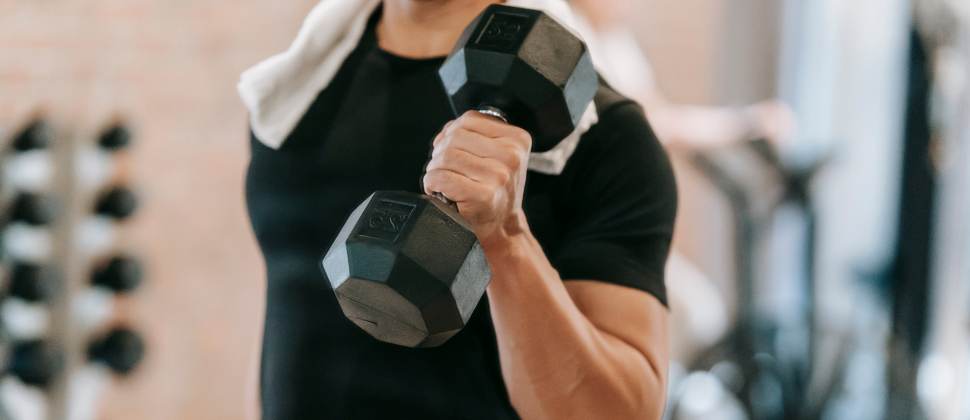
Having gym equipment at home is convenient, but it also increases the risk of accidents, as anyone can trip over items lying around. Ensure that after each workout session, you clear the area of objects that may pose a stumbling hazard during your exercises. Exercise equipment such as treadmills, exercise bikes, and weight machines all come with the potential risk of crushing and pinching your toes and fingers if you’re not paying attention. It’s crucial to keep small children away from the area where you’ve placed these machines.
If you have kids in the house, take extra precautions by closing the room while working out to prioritise their safety. Children are naturally curious, and the moving parts of gym equipment can pose serious dangers. By creating a designated and secure workout space, you not only protect yourself but also ensure a safe environment for your entire household. Always be mindful of the potential risks associated with home gym equipment to promote a secure and accident-free workout zone. Additionally, give your gym equipment room to breathe. Keeping them too close can make them work wrong and mess up your form. Always read the manuals before setting up each piece, as some need more space than others to work properly.
Conclusion
Adopting these essential home gym safety tips ensures not only a secure exercise environment but also an enjoyable fitness journey. Regardless of whether you’re just starting or consider yourself a fitness enthusiast, emphasising safety is fundamental. From maintaining a tidy workout space to seeking expert guidance and using equipment safely, these simple practices contribute to a more effective and satisfying home gym experience. By prioritising safety, you provide the basis for long-term well-being and success in your fitness activities. So, be mindful, be careful, and make the most of your at-home workouts.

